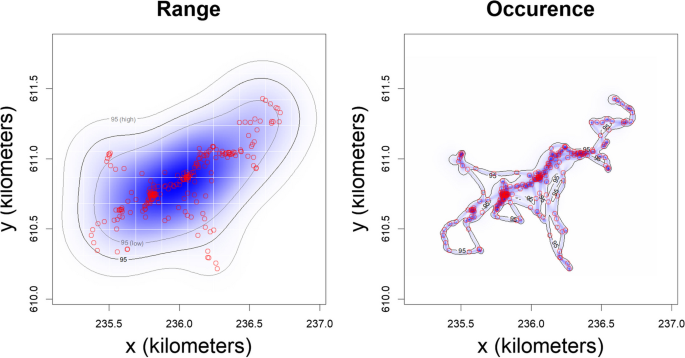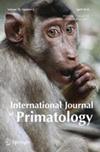The Importance of Representative Sampling for Home Range Estimation in Field Primatology
IF 1.8
3区 生物学
Q1 ZOOLOGY
引用次数: 0
Abstract
Abstract Understanding the amount of space required by animals to fulfill their biological needs is essential for comprehending their behavior, their ecological role within their community, and for effective conservation planning and resource management. The space-use patterns of habituated primates often are studied by using handheld GPS devices, which provide detailed movement information that can link patterns of ranging and space-use to the behavioral decisions that generate these patterns. However, these data may not accurately represent an animal’s total movements, posing challenges when the desired inference is at the home range scale. To address this problem, we used a 13-year dataset from 11 groups of white-faced capuchins ( Cebus capucinus imitator ) to examine the impact of sampling elements, such as sample size, regularity, and temporal coverage, on home range estimation accuracy. We found that accurate home range estimation is feasible with relatively small absolute sample sizes and irregular sampling, as long as the data are collected over extended time periods. Also, concentrated sampling can lead to bias and overconfidence due to uncaptured variations in space use and underlying movement behaviors. Sampling protocols relying on handheld GPS for home range estimation are improved by maximizing independent location data distributed across time periods much longer than the target species’ home range crossing timescale.

代表性抽样对野外灵长类动物学家程估计的重要性
了解动物为满足其生物需求而需要的空间大小,对于理解动物的行为、它们在群落中的生态作用,以及有效的保护规划和资源管理至关重要。习惯灵长类动物的空间使用模式通常是通过使用手持GPS设备来研究的,该设备提供了详细的运动信息,可以将范围和空间使用模式与产生这些模式的行为决策联系起来。然而,这些数据可能不能准确地代表动物的全部运动,当期望的推断是在家庭范围尺度时,会带来挑战。为了解决这个问题,我们使用了来自11组白面卷尾猴(Cebus capucinus imitator)的13年数据集来检验采样元素(如样本量、规律性和时间覆盖)对家庭范围估计精度的影响。我们发现,只要在较长时间内收集数据,在相对较小的绝对样本量和不规则抽样的情况下,准确的家乡范围估计是可行的。此外,由于未捕捉到空间使用和潜在运动行为的变化,集中采样可能导致偏差和过度自信。通过最大化分布在比目标物种的家乡范围跨越时间尺度更长的时间段内的独立位置数据,改进了依赖手持式GPS进行家乡范围估计的采样协议。
本文章由计算机程序翻译,如有差异,请以英文原文为准。
求助全文
约1分钟内获得全文
求助全文
来源期刊
CiteScore
4.10
自引率
16.00%
发文量
68
审稿时长
6-12 weeks
期刊介绍:
The International Journal of Primatology is a multidisciplinary forum devoted to the dissemination of current research in fundamental primatology. Publishing peer-reviewed, high-quality original articles which feature primates, the journal gathers laboratory and field studies from such diverse disciplines as anthropology, anatomy, ecology, ethology, paleontology, psychology, sociology, and zoology.

 求助内容:
求助内容: 应助结果提醒方式:
应助结果提醒方式:


